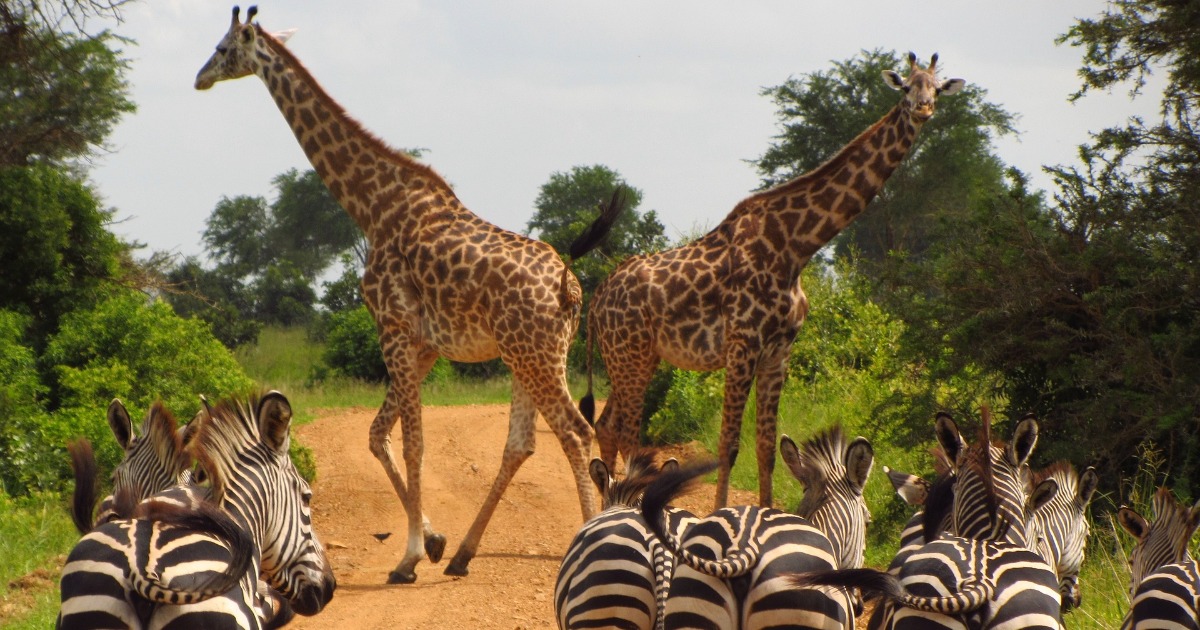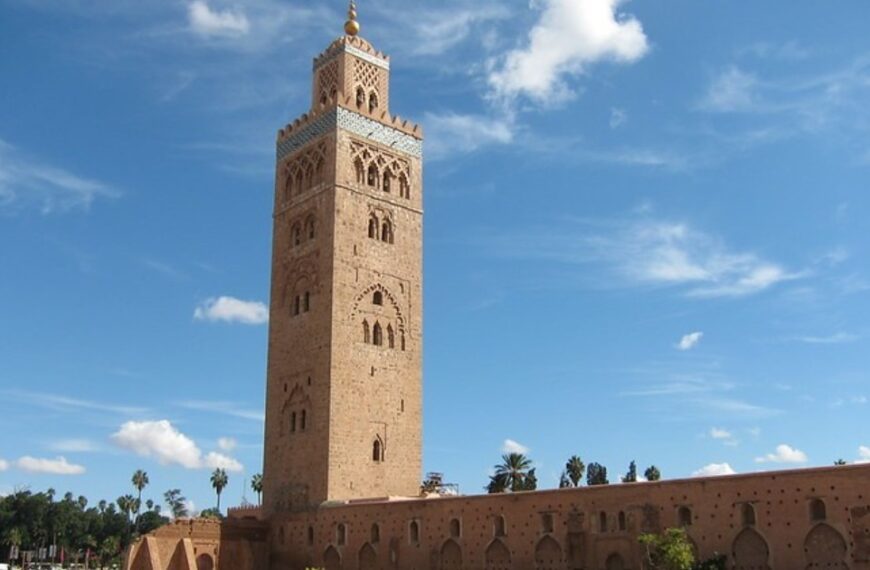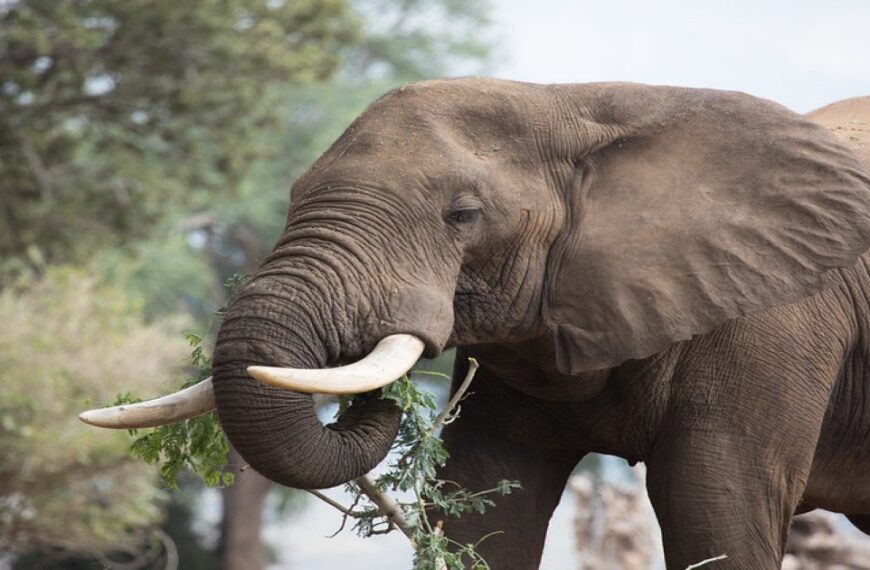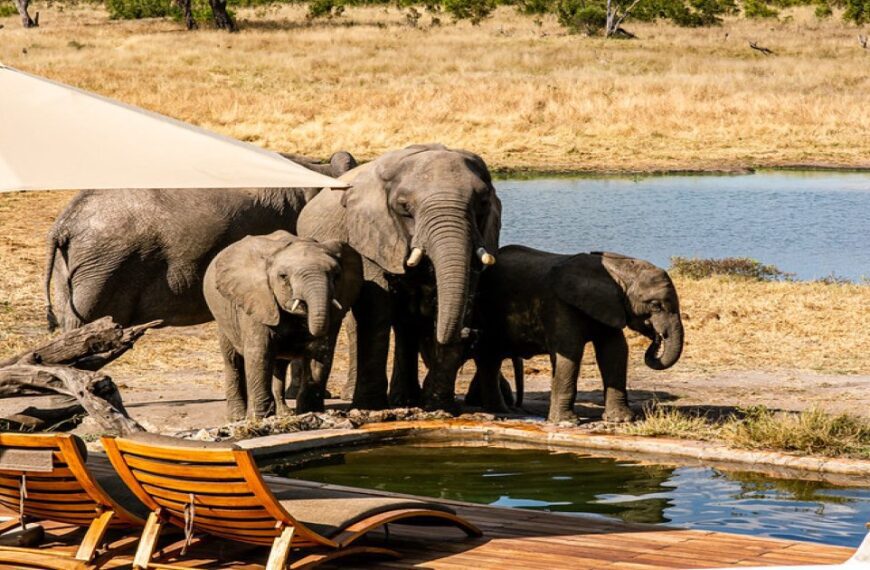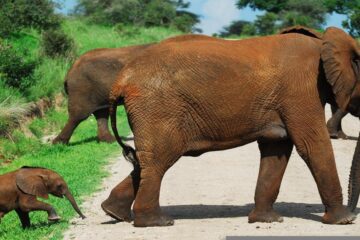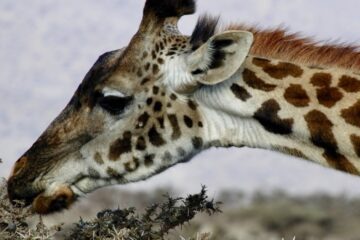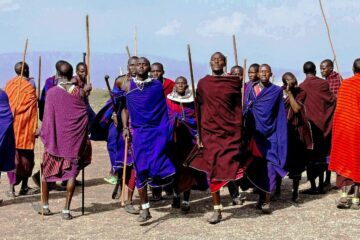Tanzania has a diversified and plentiful animal population, making it one of the top safari locations in Africa.
This article will look at some of the most popular creatures found in Tanzania’s national parks, reserves, and other protected regions.
It will also give information on where these creatures are normally found around the nation, allowing visitors to arrange their visit appropriately.
Tanzania, with its mountainous terrain and diverse ecosystems, provides an unrivaled experience for nature enthusiasts seeking adventure and discovery.
Elephants
Elephants are one of Tanzania’s most recognizable creatures and may be found across the nation. For years, they have been a vital part of Tanzanian culture, with local communities celebrating their socializing habits.
Conservation efforts are underway to conserve these gorgeous birds, as population expansion is becoming a worry owing to altering migratory patterns. The government has enacted a slew of safeguards to keep elephants safe from poaching, habitat loss, and other human-caused risks. This involves enacting laws making it illegal to shoot or sell elephant parts, establishing protected places where they may dwell safely, and conducting education programs on how people and elephants can cohabit together.
Furthermore, environmentalists have urged residents to participate in monitoring activities such as following migratory paths and reporting any unusual behavior. So far, these initiatives have shown great outcomes; nevertheless, more has to be done if future generations of Tanzanians are to continue enjoying these wonderful creatures on both a social and cultural level.
It is our job as global citizens to realize the importance of elephants not just for Tanzania, but also for global biodiversity. We must collaborate to create solutions that ensure their safety while also recognizing their value in society.
You might also like: Best 15 National Parks to visit in Tanzania
Lions
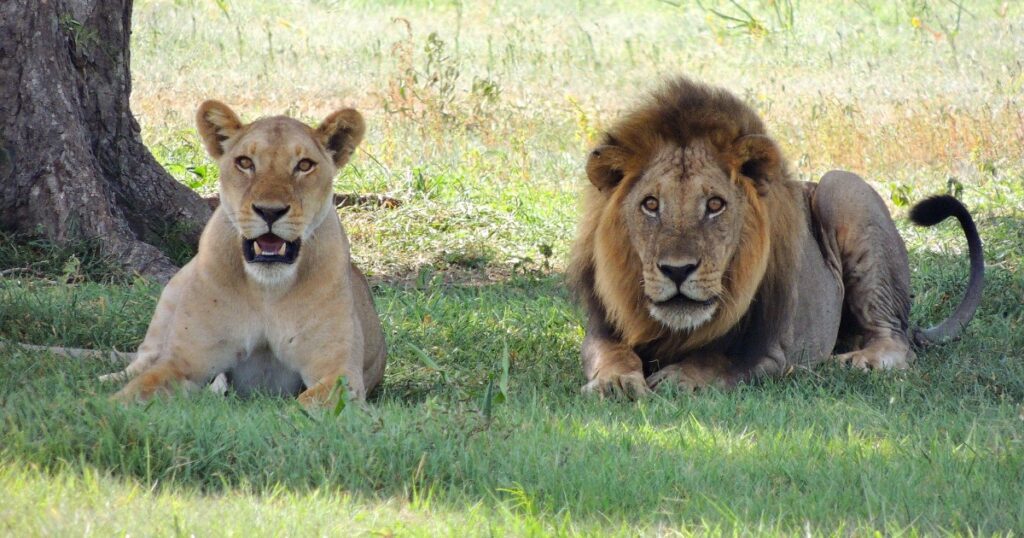
Tanzania has one of Africa’s greatest lion populations, with an estimated population of 2,000 – 3,500. Lions may be found in parkland environments as well as the wide plains and open woods of Tanzania.
Researchers acquire insight into lion biology and behavior through studying male-female dynamics, habitat conservation initiatives, and human-lion interactions.
The significance of safeguarding these magnificent creatures cannot be overstated, as they face dangers from poaching and human development. Conservation organizations have been working hard to lessen the danger of hunting by promoting anti-poaching methods and expanding animal protected zones.
To better safeguard this species, it is critical to study how human activity affects lion behavior in order to implement effective prevention measures. Education also plays an important role here; raising awareness among local populations about the need of limiting activities that may disturb wild animal habitats or lead to more poaching events will help assure better long-term results for both humans and lions.
There is optimism that by implementing suitable preventative techniques throughout Tanzanian landscapes, future generations would continue to enjoy from peaceful coexistence with these lovely species.
Leopards
Leopards are a magnificent animal native to Tanzania and an emblematic species of the Serengeti-Mara Ecosystem. Tracking these magnificent cats is no easy task, but with perseverance and patience, one may locate them as they move around their hunting regions.
Leopards display a variety of unique characteristics, including solitary living habits, wide home ranges, and diverse diets, all of which help conservationists learn how to best conserve this endangered species.
Leopard sightings are now feasible in many of Tanzania’s protected regions, thanks to rewilding initiatives spearheaded by The African Leopard Conservation Programme (ALCP) since 1996. With over 200 leopards released into reserves around Tanzania, wildlife enthusiasts may now watch them in their natural settings. However, tracking involves expertise and knowledge of the area as well as unique behavior patterns of the creatures being monitored.
Those interested in leopard conservation may discover programs ranging from carnivore population research to volunteer opportunities at orphanages rehabilitating wounded or displaced leopards, or just furthering one’s education on current challenges affecting wild cat populations today.
Participating in any type of proactive effort is critical to long-term conservation of these wonderful species.
Rhinos
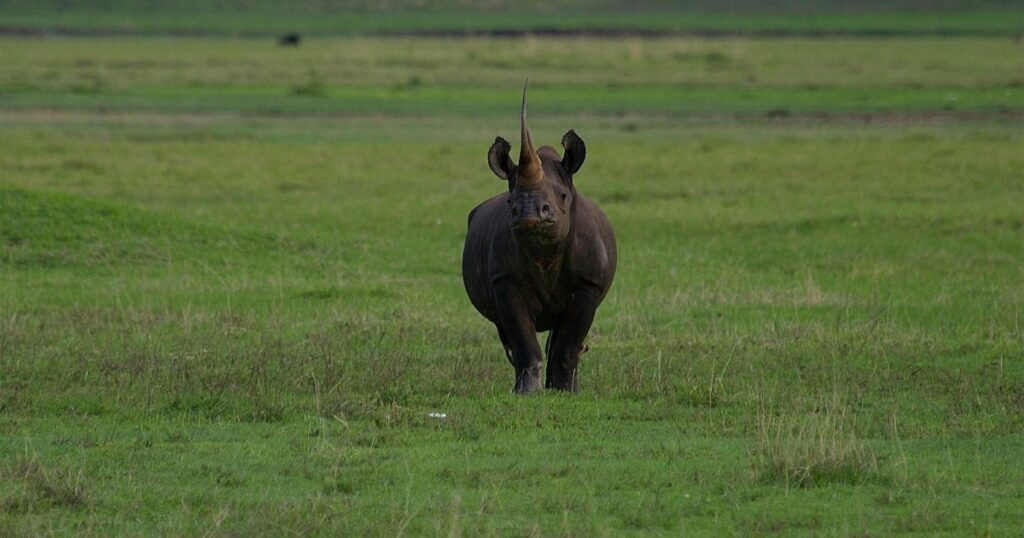
The African rhinoceros is a symbol of the continent that has faced serious dangers in recent years.
Tanzania is home to three rhino species: the black rhino, the white rhino, and the bigger one-horned rhino. Unfortunately, owing to illicit poaching for their horns, all three species’ populations have declined significantly over the last decade.
Fortunately, conservation initiatives are underway to rescue these incredible species from further extinction. There are groups dedicated to rhino conservation, such as Save The Rhino International, that collaborate with governments on anti-poaching campaigns and raise funding to conserve rhino habitats and populations. Furthermore, law enforcement organizations often work with local communities to ensure that poachers are caught and that hunting regulations are followed.
These critical efforts may help avoid the extinction of these magnificent species, but more must be done if we are to ensure a future in which they can wander freely over Africa’s savannahs and woods.
Education initiatives must continue to be implemented so that people understand why it is critical to protect both wild animal populations and their natural habitats. Furthermore, funds should be made available so that rangers may monitor protected areas on a regular basis, giving them a greater opportunity of apprehending poachers before they do too much harm.
With this mix of activities, we may soon witness an increase in the number of African rhinos!
Giraffes
Giraffes are among Tanzania’s most recognizable species, with their long necks and tall height making them easy to recognize on safari. As a result, it is not surprising that giraffe sightings are an important component of a Tanzanian wildlife encounter. Let us look at how to study these tall creatures in their native environment and what conservation measures are being undertaken for them to learn more about them.
| Trekking | Conservation Efforts |
|---|---|
| Safari treks provide fantastic opportunity to view giraffes in their natural environment while also enjoying unique experiences like connecting with local people or learning about traditional medical methods. Trekkers may also come across uncommon subspecies such as the Masai Giraffe or the Reticulated Giraffe, which have different patterns from other African species. | Poaching and habitat damage caused by human activities such as logging for fuel wood or clearing land for cultivation are the two most serious threats to giraffes today. Fortunately, organizations like as the World Wildlife Fund (WWF) conduct several conservation projects focused at safeguarding these lovely species and maintaining their habitats. These programs aim to provide resources to local populations so that they may manage land near protected areas using sustainable ways rather than damaging ones. |
Although we may snap beautiful images of giraffes on our vacations, our primary objective should always be to enjoy nature without negatively damaging any component of its ecology. If future generations are to enjoy this wonderful show, we must guarantee that all activities are guided by principles of sustainability and care for all living beings.
Hippos
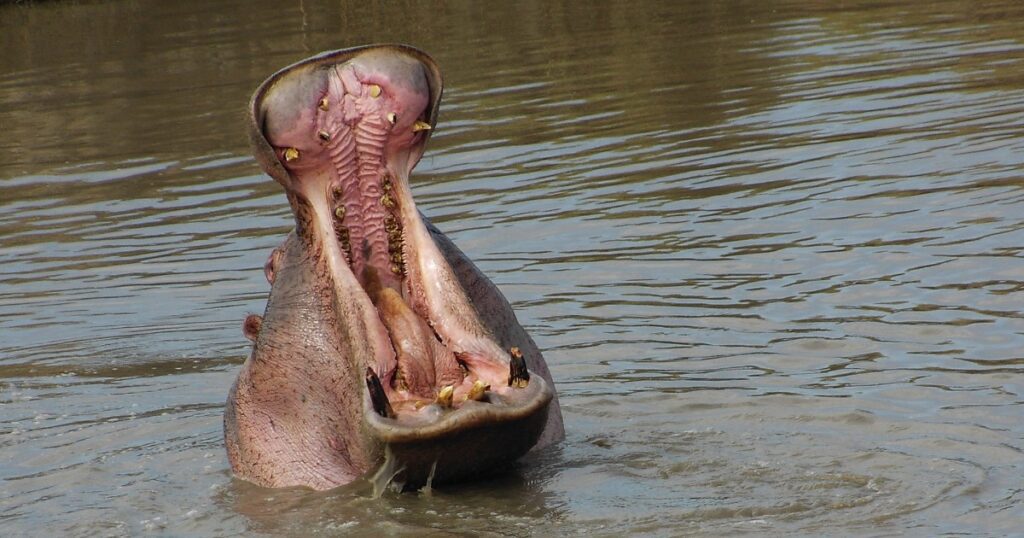
After elephants, hippos are the second-largest extant terrestrial animal. They live in Africa’s Sub-Saharan region’s rivers and lakes, with an estimated population of 125,000 – 148,000 in Tanzania alone.
Hippos are an interesting animal to study because of their unique behavior, conservation efforts, food, and habitat requirements:
- Hippos are gregarious creatures that live in groups known as “bloats” that are headed by a dominant male. Bloats are made up of females, calves, and subordinate males who guard their young. They leave the water throughout the night to feed on grasses and return before daylight.
- Conservation Efforts: Hunting for food or ivory trade motives has resulted in a substantial decrease in hippopotamus numbers in recent decades. To protect these magnificent creatures, international organizations such as the World Wildlife Fund (WWF) have collaborated with local governments to establish protected areas such as Serengeti National Park, where tourists can observe these unique creatures in their natural habitats without jeopardizing their safety or health.
- Hippopotamuses graze mostly on water vegetation, but may also take fruits, seeds, and even small animals if accessible. As semi-aquatic animals, they are accustomed to survive both underwater and on land; yet, because to their big size, they prefer to spend the day in murky waters, limiting direct sunlight exposure, which might cause skin burn concerns. Furthermore, shallow places along banks enable female hippos to effectively spawn, guaranteeing the survival of this spectacular species for future generations.
Also read: The best time to visit Tanzania
Warthogs
Warthogs are pig-like creatures endemic to most of Africa. They have appeared significantly in popular culture, from Disney’s The Lion King to Mr. T from The A-Team.
Warthogs have a vital and unique function in Tanzania’s ecosystems. It is critical to protect them in order to preserve healthy populations of other animals as well as people who live with them.
Warthogs generally graze on grasses, insects, and fruits found in savanna settings, although they may consume small animals such as mice or hares if they are available. They augment their diet by scavenging corpses left behind by bigger predators like as lions and hyenas.
Warthog behavior reflects both their solitary existence, with little interaction during mating season, and their mostly diurnal routines, which include wallowing in mud baths to cool down on hot days.
Because of population concerns given by hunting and habitat damage caused by human agricultural activities and growing settlements, the conservation status of warthogs varies by location. Despite these threats, their resilience has enabled them to thrive in certain regions where protective measures have been implemented while still providing a crucial source of food for rural populations throughout Tanzania who rely on them for nutrition.
Warthogs may be found all throughout the nation, occupying a variety of habitats ranging from forested slopes to wide plains near water supplies, thanks to strong conservation initiatives.
Zebras
One of Tanzania’s most recognizable animals is the zebra. Zebras may be found in a number of environments across the nation, including woods and grasslands, and are distinguished by their unique black-and-white stripes.
For millennia, zebras have been an essential part of Tanzanian culture and have become a national emblem.
Understanding this species’ habits and discovering its hidden habitats are critical components of conservation efforts for this species.
Zebras live in big herds with unique male-female hierarchies that control breeding privileges and availability to resources.
They also migrate seasonally in response to climate changes such as drought or floods.
Unfortunately, zebra numbers in Tanzania and across Africa have declined because to human development, overhunting, and disease outbreaks.
Conservation groups such as the African animal Foundation are working relentlessly to reduce these concerns through habitat conservation projects and other activities to raise awareness about animal preservation strategies in local communities.
Wildebeests
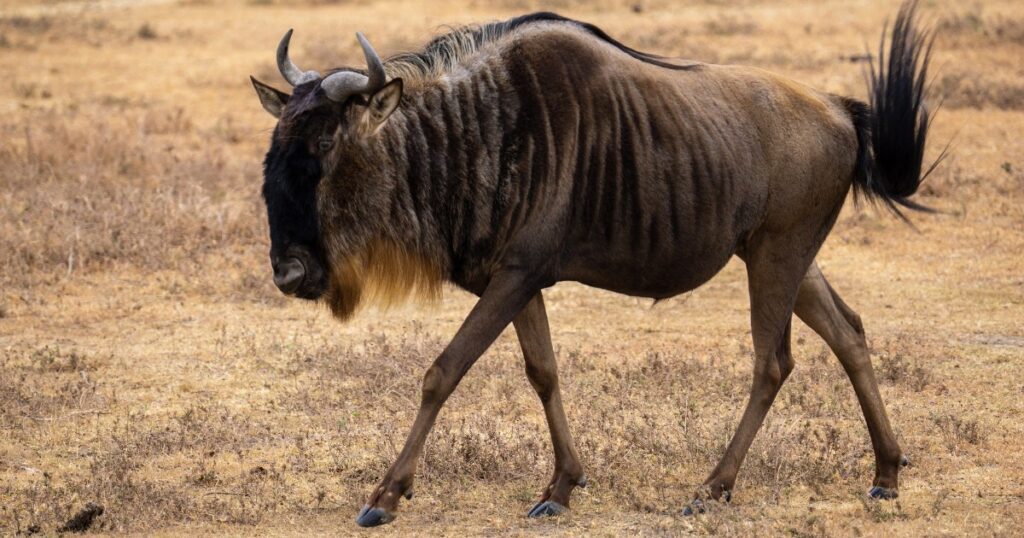
Wildebeests are a keystone species in the Tanzanian savannah. These creatures have encountered several obstacles, including population reduction owing to habitat degradation, migratory patterns influenced by climate change, and changes in breeding behavior.
Conservation efforts must be expedited if these gorgeous species are to remain a part of Tanzania’s scenery for future generations.
According to recent park ranger studies, the Serengeti National Park is home to one of the world’s biggest wildebeest herds, estimated at roughly 1.3 million individuals. This figure represents over half of all wildebeest on the planet, emphasizing the significance of conservation in conserving both the species and its unique ecosystem.
To ensure that future generations may see Tanzania’s most famous species, we must control human disturbance inside park limits while also protecting migratory pathways outside of them.
Furthermore, research into how climate change affects mating patterns has been essential in understanding how to best protect wildebeests and other big African herbivores like elephants in their native habitats throughout Africa.
As drought continues to cause famine across much of East Africa, sustainable methods such as targeted grazing or rotational cropping will become increasingly important components of any successful conservation strategy aimed at protecting wildebeest populations not only in this region but also elsewhere on the continent.
Mountain Gorillas
Given their distinct ecological responsibilities and physical characteristics, the shift from wildebeests to mountain gorillas is abrupt. Mountain gorillas are the world’s biggest living primates, renowned for their size and power. They dwell in highland woods at heights ranging from 8200 to 13000 feet in Rwanda, Uganda, and the Democratic Republic of the Congo.
Because of their distant environments, tracking gorillas requires special licenses and great work. Visitors get a fantastic chance to watch these beautiful animals up close while also helping to gorilla conservation efforts thanks to highly qualified guides. Furthermore, researchers utilize monitoring data to examine gorilla characteristics such as troop social interactions, habitat preferences, and meal choices.
Gorillas eat mostly vegetation, which includes leaves, stems, pith, bark, and fruit. This permits them to receive adequate calories for energy since they do not travel long distances in search of food sources like other apes or monkeys.
Furthermore, female mountain gorillas normally give birth every 4-5 years, which serves to limit population expansion in the face of persistent concerns like as poaching and deforestation, which diminish accessible habitat for this amazing creatures.
Frequently Asked Questions
There are many elements to consider when deciding when is the ideal time of year to visit Tanzania.
Climate-wise, June through August is the dry season, with colder temperatures; October through December has milder weather with less rainfall.
Late December to March provides a perfect blend of decent lodging availability and improved possibilities of observing wild animals in their native environment for visitors searching for best wildlife watching options. Additionally, transportation alternatives are more plentiful throughout these months.
Visitors should use care at all times and keep up to speed on current travel warnings from local authorities before starting on any trip throughout the year.
The cost of a safari lodge stay in Tanzania varies substantially based on the season, location, and style of accommodation required.
In general, lodgings vary in price from budget-friendly to luxurious.
Wildlife preservation costs, animal conservation projects, and cultural interactions with local tribes may be included in the price.
There are also numerous sustainable tourism initiatives that support conservation expenses for guests who wish to ensure that their visit benefits both animals and communities.
It is essential to be aware of the regulatory procedures and limitations that may apply while planning a safari in Tanzania.
Visitors above the age of 16 must have a valid passport and receive an entrance permission before visiting the nation. Additional permissions may be required for kids under the age of 16.
Special permits are also required for tracking animals or engaging in particular activities such as night drives or bush hikes as part of conservation initiatives.
It is important to travel responsibly by supporting responsible tourism efforts and adhering to local rules and regulations regarding animal monitoring while on your trip. This will guarantee that you have a safe and ethical experience while also positively contributing to conservation efforts in Tanzania.
Tanzania is home to a diverse range of animals, some of which are only found in national parks.
Mountain gorillas and African wild dogs are two indigenous creatures that live in the country’s protected regions; both of these species are subject to conservation efforts to keep their numbers from declining.
Other natural species includes zebras, elephants, giraffes, lions, and cheetahs, all of which may be seen on safari expeditions led by local people who are well-versed in animal behavior.
Conservation is critical for conserving Tanzania’s distinct habitats and ensuring future generations have access to these incredible animals.
Tanzania is a fantastic location for both wildlife enthusiasts and safari-goers. While the nation provides different means to go to your target area, there are several travel suggestions that might make your trip more pleasurable.
When planning a vacation, keep safari etiquette, wildlife spotting skills, photography suggestions, packing list, and other travel recommendations in mind. Taking the effort to explore these subjects ahead of time will guarantee that you have the best possible experience in Tanzania.
Furthermore, if one decides to drive in the region, they should be aware of local traffic restrictions as well as possible hazards such as wild animals on highways or treacherous terrain.
Conclusion
Tanzania is a wildlife-rich nation with a diverse range of species to observe.
Tanzania offers something for everyone, from the magnificent lions, giraffes, and elephants that wander the gorgeous grasslands to the elusive leopards, cheetahs, and wild dogs that live among its national parks.
Tanzania is best visited between July and October, when most of the wildlife can be seen on safari.
Accommodation at a reputable safari lodge should cost between $300 and $400 per night, although permits are normally included.
It is best to hire local tour operators to move about Tanzania since they will supply the relevant information on transportation routes and entry points.
As a result, if you’re searching for a once-in-a-lifetime opportunity to see some of Africa’s most iconic animals up close, Tanzania is the place to go!

